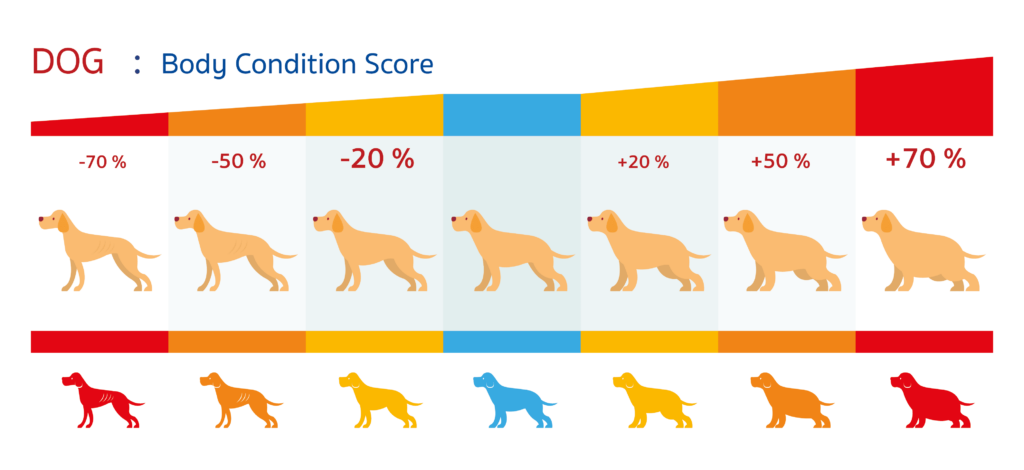The last issue aboutnutrigenomics in the pet sector explained that various diseases in pets result from inflammation at the deepest level of the animal: in the cells. In addition to digestive disorders, skin irritations or intolerances, this also applies to obesity. Obesity is one of the most common problems facing our pets and is reaching epidemic proportions nationally. Around half of all dogs and cats are obese. Animals with diabetes, arthritis, high blood pressure or hyperthyroidism are particularly susceptible.
Studies show that being overweight and obese shortens the life expectancy of dogs by an average of two years. Overweight animals also have an increased risk of numerous diseases, such as:
- Cardiorespiratory diseases (especially in brachycephalic dog breeds)
- Endocrine disorders, including hypothyroidism and Cushing’s disease
- Decreased immunological changes and functional changes such as reduced respiratory capacity, heat intolerance and lack of exercise capacity
- Metabolic abnormality (high or abnormal blood fat levels)
- Neoplasia (cell divisions and abnormal growth like in cancer)
- Orthopedic disorders
- Diseases of the urogenital system, such as transitional cell carcinoma in the bladder
What counts as overweight?
A pet is overweight if their ideal weight is exceeded by more than 10%. More than 20%, and they are obese.

The Body Condition Score (in short: BCS). This BCS uses a five-point or nine-point scale. You look at your dog or cat from two different perspectives: one from a bird’s eye view and one from the side. With the rib test you feel whether the ribs can be felt evenly or whether there is a thick layer of fat on them. These checks should be done by the owner every two to four weeks.
In addition, certain breeds are known to have a predisposition to obesity, such as the following:
- Basset
- Beagle
- Boxer
- Cairn terrier
- Cavalier King Charles Spaniel
- Cocker spaniel
- Dachshund
- Doberman Pinscher
- Golden retriever
- Labrador retriever
- Scottish terrier
- Sheltie
- West Highland White Terrier
Genetic predisposition is not the only decisive factor in whether an animal tends toward obesity. Living standard, nutrition, the amount of exercise and environmental influences also contribute to a healthy existence and affect body weight. Nutrition is particularly important here. Studies show that poor diet does not lead to health problems by increasing body fat, but by altering the gene expression of genes associated with obesity. This means: If an animal is given food that suppresses its gene expression for obesity, it results not only in a reduction in weight, but also in a reduction in the risk of developing other diseases associated with obesity. When the body develops a tendency towards obesity, a cycle develops that is difficult to break. Fat cells keep creating new fat cells and the more there are, the more pro-inflammatory messenger substances, or cytokines, are formed. This leads to chronic inflammation in the body.

